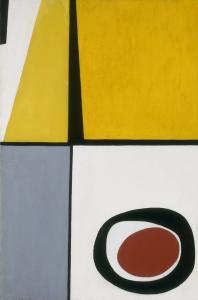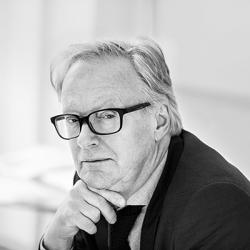Travel in Time and Space
Travel in Time and Space
The research project focuses on the question how the art of prehistoric rock painting influenced the genesis of contemporary art from 1930 to 1960 in Paris and New York. This includes analyzing the exhibition Prehistoric Rock Pictures in Europe and Africa, which was curated by Alfred H. Barr in New York (Museum of Modern Art, 1937-39) and in Paris (1930, 1933) which worked as a catalyst for 20th century art. 150 copies of prehistoric rock paintings from the collection of the German anthropologist Leo Frobenius will be put into new social contexts of visual culture, and the mechanisms of appropriating them will be analysed in detail. For the first time, rock art was shown to the public in color and in its original size, thus visualizing the origins of human creativity. The exhibition initiated reception processes by surrealist artists in Paris and representatives of abstract expressionism in New York. Artists of the New York School, the Indian Space Painter and the American Abstract Artist, such as Robert Motherwell, Jackson Pollock, Will Barnet, Mark Rothko and Balcomb Greene had been greatly influenced by the concepts of prehistoric art up to the 1960s.
The discourse will also draw on media-anthropological issues of original, copy, reception, and the mobility of prehistoric art in the first half of the 20th century, especially from Altamira.
____________________________________________________________
DFG Book Proposal (2018/19)
The “Cavey” Pictures
The American Abstract Artists and their turn to non-figurative art inspired by prehistoric rock paintings at MoMA (1937–39)
Elke Seibert (PhD), German Center for the History of Art (DFK) Paris
This book proposal will illuminate an, until now, disregarded aspect of American art history: the influence of prehistoric paintings exhibited in the Museum of Modern Art from April 28 to May 30, 1937 on the New York art scene and the artists of the collective The American Abstract Artists (AAA).
On the basis of a years-long scholarly study, which included primary sources from the Smithsonian Archives of American Art and the Getty Research Center, and with impressive works from the collections of the National Gallery of Art and the Smithsonian American Art Museum, a historic moment in the early development of American abstract expressionism can be compellingly presented.
New facts about the New York School and the transatlantic connections between the axes of Paris and New York clearly show, as Irving Sandler and Clement Greenberg have written, that, around the years 1937–39, the AAAs were an innovative and influential group.
Shortly after the group’s founding by, among others, Josef Albers, Rosalind Bengelsdorf, Ilya Bolotowsky, Harry Bowden, Bryon Browne, Giorgio Cavallon, Arthur Christie, Burgoyne Diller, Werner Drewes, Susie Frelinghuysen, Albert Gallatin, Gertrude and Balcomb Greene, Harry Holtzman, Carl Holty, Ray Kaiser, Paul Kelpe, Marie Kennedy, Leo Lances, Alice Mason, George McNeil, Esphyr Slobodkina, David Smith, Albert Swinden, and Wilfrid M. Zogbaum, and their first group exhibit in early April 1937, MoMA presented an exhibition of copies of prehistoric cave paintings from the collection of ethnologist Leo Frobenius, of Frankfurt. The influence of these works was intensively discussed and reflected on in this circle of young artists.
Arshile Gorky, Willem de Kooning, and Hans Hofmann were close to the AAA artists, taught them or worked with them within under the Federal Art Project. AAA members were also invited to participate in exhibitions by the group The Ten. Through these manifold interconnections, The American Abstract Artists could actively approach their goal: to usher in the turn from figurative to abstract art.
To the approximately 150 color copies of prehistoric artifacts, in part of the same size and scale as the originals, Alfred H. Barr added a selection of works by avant-garde European painters, such as Paul Klee, Joan Miró, Jean Arp, André Masson, and Wassily Kandinsky, and visually presented the existing debates on prehistory and modernism.
Furthermore, another small section with lithographs of pictograms and petroglyphs by the Chumash Indians in California, copied by the young American Lala Eve Rivol for the Index of American Design in 1935, directed attention to the country’s own cultural heritage. The Barrian concept integrated the tendencies of the European and American avant-garde as well as the interest in archetypes and the teachings of C. G. Jung.
In a chronology of events, how specific artists of The American Abstract Artists changed their pictorial grammar after seeing, discussing and critiquing the exhibit Prehistoric Rock Pictures in Europe and Africa in MoMA will be made clear in the individual chapters. Art met art and was transformed.
Beginning with a look at the group’s portfolio (1937) and subsequent works (1939–42), which can be traced in the aforementioned collections in Washington, D.C., an astonishing exchange of pictorial language can be seen. The prehistoric paintings in MoMA showed them solutions to contemporary artistic problems and legitimized the turn to non-figurative art through the return to the past, to nature and the beginning of human creativity. They experimented with perspective, three dimensionality, the overlay of surfaces and colors (overlay of image on image), the materiality of eroded surfaces, the balance of light and shadow, and caves as spaces for conceptual artworks. The fantastic and magical yet simple nature of these works struck a chord with this young generation, who was still clinging to cubism and regionalism.
The construction of a prehistory opened a projection space for the longed-for new beginning in art and in society, which, so far, has not been taken into account in publications on The American Abstract Artists. The intent of this project is to close this gap in the research and to inspire future research on prehistory and modernity.
This publication is sponsored by the German Research Foundation (DFG) in Bonn (Germany).
DFG book project end: 30.06.2020
Bibliography:
Elke Seibert, “First Surrealists Were Cavemen“. The American Abstract Artists and Their Appropriation of Prehistoric Rock Paintings in 1937, In: Getty Research Journal (2018), accepted.
Elke Seibert and Agathe Cabau (Ed.), Discovering/Uncovering the Modernity of Prehistory, conference publication (23./24.03.2017), German Center for the History of Art Paris, with essays by Rémi Labrusse, Thierry Dufrêne, Harald Floss, Maria Gonzales Prenendez, Emmanuel Anati, and Elke Seibert, ATELIER Publishers: Capo di Ponte 2018, URL: https://dfk-paris.org/en/publication/discoveringuncovering-modernity-prehistory-2627.html.
Elke Seibert, Alfred J. Barr’s Visionary Concept of the Prehistoric and the Modern: An Inspiration for American Artists, 10 American: After Paul Klee, exhibition catalog Centre Paul Klee Bern/ Philipps Collection Washington D.C., Prestel: Munich/New York 2017, 45-53.
Elke Seibert, Prehistoric Paintings at the Museum of Modern Art (1937) and its modernity (Prähistorische Malereien im Museum of Modern Art (1937) und ihre Modernität), Art of Prehistoric Times (Kunst der Vorzeit), exhibition catalog Gropius Bau Berlin, ed. by Hélène Ivanoff/Karl-Heinz Kohl/Richard Kuba, 2 Volumes, Prestel: Munich/New York 2016, Volume 2, 54-62.
Elke Seibert, Klees ‘Little Experimental Machine’ and Prehistoric Paintings at the Museum of Modern Art in New York (1937) (Klees ‘Little Experimental Machine’ und prähistorische Malereien im Museum of Modern Art in New York (1937)), www.zwitscher-maschine.org, No. 2, 2016. https://www.zwitscher-maschine.org/archive/2016/9/11/seibert-klee-und-prhistorische-malerei
Elke Seibert, Prehistoric Paintings at the Museum of Modern Art (Prähistorische Malereien im Museum of Modern Art), www.kunsttexte.de, July 2014. https://edoc.hu-berlin.de/handle/18452/7990
Illustration:
Rosalind Bengelsdorf, Abstraction, 1938, Oel on canvas, 91,5 x 61 cm, Smithsonian American Art Museum, Washington DC.
Leadership
Researcher






